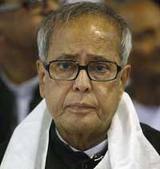  Two weeks before a decision was taken to allot new 2G licenses in 2008, the then External Affairs Minister Pranab Mukherjee said the Department of Telecom(DoT) may "continue to follow the existing policy" for license distribution till further changes are made.
In an official note to Prime Minister Manmohan Singh who sought his views on "Telecom Licences and Spectrum Issues", Mukherjee also suggested a transparent framework for granting spectrum and that the criteria for the grant of licences may be strengthened and put in public domain at the earliest. Mukherjee at that time was also heading the Group of Ministers(GoM) on spectrum related issues.
The note was accessed through a RTI query by Advocate Vivek Garg to the Prime Minister''s Office seeking details of all correspondence in connection with 2G spectrum allocation.
The note was sent on December 26, 2007, a fortnight before a decision was taken by the then Telecom Minister A Raja to give 122 new 2G licenses embedded with 4.4 Mhz of spectrum to telecom firms at 2001 prices of Rs 1,651 for pan India operations.
"Para 11 of these guidelines(for Unified Access Services License" notified on December 14, 2005) clearly say that the licenses shall be issued without any restriction on the number of entrants for provision of Unified Access Services in a service area.
"Department of Telecommunications (DOT) may continue to follow this policy till any further changes are made in this regard," Mukherjee said.
He, however, had suggested that allocation from the available spectrum may be made first to the existing operators followed by those who were issued licences in December 2006 and then to those who have applied for cross-over technology on "first-come-first-served" basis.
"While under the existing policy, the Government may keep on issuing new licenses, the criteria for the grants of licenses may be strengthened and put in public domain at the earliest," Mukherjee had said.
"While it is the prerogative of the Government to frame, revise and change the policy, it is also the responsibility of the government to do so in a transparent manner and then follow the stated policy both in letter and spirit.
"Thus, it is essential for DOT to issue the new norms immediately so that the spectrum allocation is done in a transparent manner," Mukherjee's note had said.
He said that enforcement of stringent norms may lead to change in the entitlement of existing license holders and may increase the availability of the spectrum for new license holders. |